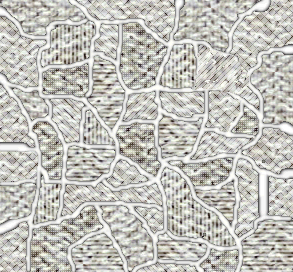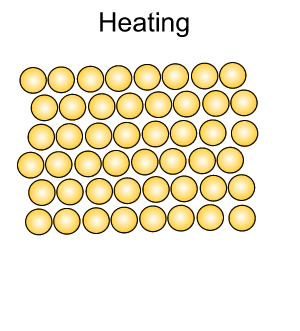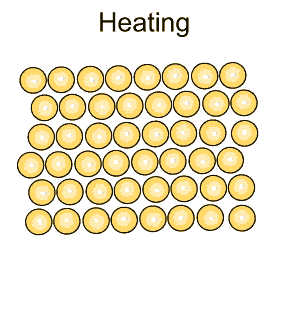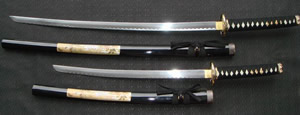Science of Conflict
Metallurgy-Iron
Quenching
Pure iron is a soft metal that is useless for the construction of weapons. When iron is heated to just over 900oC and then cooled, groups of atoms combine together to form grains, as shown on the right. Grains are separated by boundaries called dendrites.

Grain size greatly
affects the toughness of steel. Smaller grain size gives tougher or harder steel. When steel is heated and cooled
quickly, as in quenching, smaller grain size is the result. This makes the steel harder but brittle.
When a force is applied to the surface of a metal, layers of atoms roll over each other. This rolling of layers of atoms over each other is hindered by grain boundaries because at the boundaries atoms don't line up properly. Therefore more grain boundaries there are, or the smaller the individual crystal grains, the harder the metal becomes.
Since the grain boundaries are areas where the atoms aren't in such good contact with each other, metals tend to fracture along grain boundaries. Increasing the number of grain boundaries not only makes the metal harder, but also makes it more brittle.

Heating a metal and then letting cool slowly is known as annealing. Annealing tends to move the atoms into a more regular arrangement and decreases the number of grain boundaries by producing larger crystal structures, as shown in the animation on the right. This makes the metal softer.
Banging the metal around when it is cold tends to produce lots of small grains. Cold working therefore makes a metal harder. To restore its workability, you would need to reheat it.
You can also break up the regular arrangement of the atoms by inserting atoms of a slightly different size into the structure. Alloys such as brass (a mixture of copper and zinc) are harder than the original metals because the irregularity in the structure helps to stop rows of atoms from slipping over each other.

A black smith making a horse's shoe would often heat the metal until it glows red hot, beat into shape and then place it quickly into water. How does placing the red hot metal in water change its properties?

View the video on the right.
1) When metals solidify the atoms arrange themselves into definite patterns known as
2) What are grains and how are they formed?
3) What is an alloy?
4) Why is an alloy stonger than the pure metal?
Consider the image on the right. A solution of copper sulphate was placed in three different petri dishes and placed in three different locations.
One was placed under a hot lamp, another in a refrigerator and the third was left on the bench in a room at normal room temperature.
Which dish was left where? Give a reason.
Click to see a larger image.
